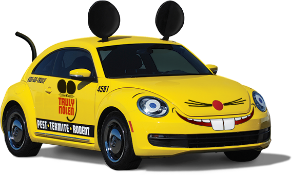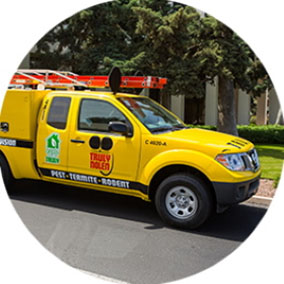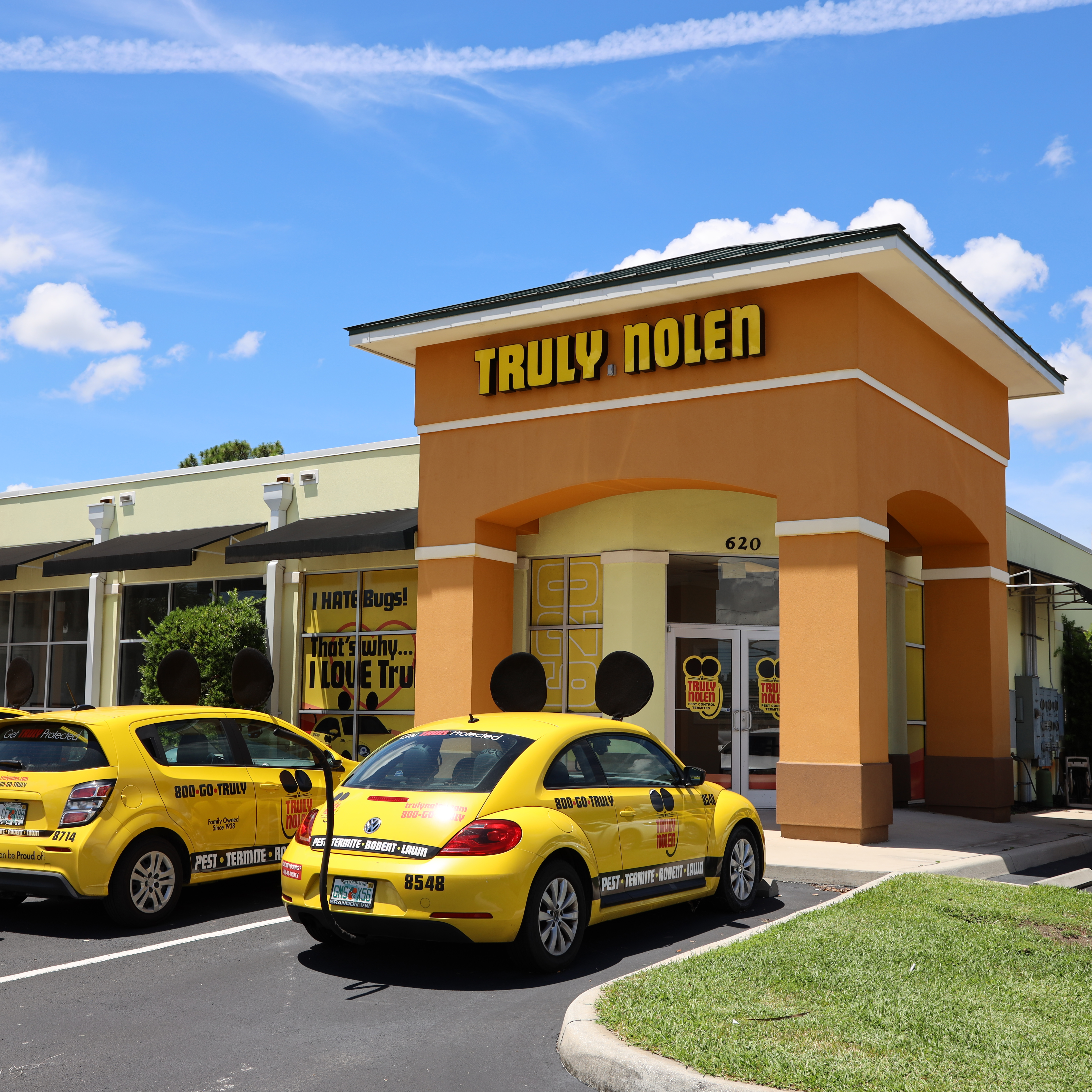

We understand that it can be unnerving when bees or wasps move into your property. At Truly Nolen of Daytona Beach, we are ready to act quickly to eliminate the problem. Truly Nolen's Bee & Wasp Control Service starts with an inspection of the property and a determination of the extent of the problem. We will also classify the type of bee or wasp and develop a customized treatment plan. When it comes to treatment, we understand that time is of the essence and we will be prepared to eliminate the problem at the time of the inspection.
We can safely remove:
Let's learn more about the common bee and wasp species impacting Daytona Beach and the surrounding areas:
Honey Bees & Bumblebees
“Bee” is the common name for a winged, flower-feeding insect with branched body hairs. There are about 20,000 different species of bees in the world. The greatest diversity of bee species is found in warm, arid or semiarid areas. The most common bee species in the United States include Africanized Honey Bees, Carpenter Bees, and European Honey Bees.
With large compound eyes and three simple eyes, bees can see all colors except red. Their vision and their sense of smell help them find the flowers they need to collect pollen. Pollen is an important food source for bees, both in the adult and larval stages, as it contains protein and other nutrients necessary for their survival. Bees are the most important pollinating insects, and their interdependence with plants makes them an excellent example of symbiosis that is beneficial to both parties. Bees are environmentally friendly and are vital as pollinators. Each year, bees pollinate an estimated $10 billion of crops in the United States alone.
When bees swarm, it's so their colony can spread out into new areas. An old queen bee leaves an overcrowded colony with hundreds of existing worker bees to establish a new colony. After scout bees identify a new site, they return to the swarm and guide them to the new location. In transition, the swarm hangs together in a large mass and may land on a tree branch or other surface to rest. Don't panic – most honeybee swarms are not dangerous if you leave them well alone and keep your distance.
Bees are commercially valuable and an important part of our ecosystem, but in the wrong place at the wrong time, they can become pests. If you think you may have a bee infestation, it’s important to first determine whether it’s actually bees and not some other stinging insect, like wasps, hornets, or yellow jackets, which are commonly mistaken for bees. It’s also important to identify the type of bee species, as different bee species have different nesting behaviors. Honeybees, for example, are social creatures that create large communal hives with nesting galleries and large honeycombs. Bumblebees, on the other hand, often nest in the ground, but can be found above ground around patio areas or decks.
Carpenter Bees
Nesting habits in wood and structural timbers give the carpenter bee its name. Often confused with bumblebees because of their size and coloring, carpenter bees are known to make appearances outside of homes and in gardens during the late spring and early summer months. Indeed, given the 500 or so species spread across the globe, many popular references to bumblebees actually refer to this less-hairy cousin.
Carpenter bees spend much of their lives traveling from their nest to obtain food from nearby flowers. As such, the bees can be hard to spot and are more likely to be identified by their distinctive humming sound and nesting holes. Both genders of carpenter bee are relatively harmless unless provoked, with males being more aggressive but lacking stingers.
While initial damage from carpenter bees is limited to a small nesting hole, that hole is likely to be expanded by subsequent generations. Over time, structural damage may occur as the bees branch out into new and larger tunnels. Since these expansive structures are hidden, identifying a problem can be difficult. Carpenter bees create holes in untreated wood, like siding, eaves, fascia boards, and decks, and use the holes as a nesting site, depositing several eggs in each hole. Holes are typically the size of a nickel and 1-2 inches deep. Keep an eye out for bare, weathered or unpainted wood areas and holes or indents that appear to be perfectly round. Additional identifiers include fresh sawdust and a humming sound from within the wood structure.
Wasps
Wasps make up a wide range of insects with over 30,000 species. They are mostly feared by people because a number of species of wasp can sting when threatened. Often confused with bees, wasps can be distinguished by their pointed lower abdomen and thin center. Different species of wasps can vary greatly in appearance, but all species have one large and one small pairs of wings.
Solitary wasps, like mud daubers, do not form social colonies. Raising two generations annually, female mud daubers build their mud nests, attaching them to different surfaces depending on the type of mud dauber. Organ pipe mud daubers build elegant nests of connecting cylindrical tubes resembling the pipes or flutes of a pipe organ. Female organ pipe daubers build these unusual and striking nests on walls, bridges, cliffs and caves on vertical, as well as horizontal faces. Black and yellow mud daubers construct nests of cylindrical tubes and then smooth the tubes over to make one, round-shaped nest. Because they lay one egg per nest, black and yellow mud daubers usually build several nests and plaster over the units to form one larger, urn-shaped nest attached to corners, crevices or cracks in buildings. Metallic-blue wasps utilize abandoned nests of other mud daubers, especially black and yellow mud dauber nests. Repurposing and reconditioning nests by applying water to the nests, blue mud daubers gather food for their young that includes black and brown widow spiders. Both black and yellow and metallic blue mud daubers frequently occupy the same nest site areas, such as porches and barns.
While some species of wasps may be very bothersome to people, the majority of the species are solitary and non-stinging. Additionally, wasps are extremely important in the control of other pest insects because almost all pests are the food source for at least one species of wasp. Without the presence of wasps, this natural insect control would not be possible. Although wasps are helpful to the environment, they can also be dangerous when encountering people. If their nest is disturbed, wasps become very defensive and will swarm and sting in order to protect the nest.
Think you have bees or wasps? Call Truly Nolen of Daytona Beach today!

Contact us today to schedule your complimentary inspection.
We work to minimize our impact on the environment by using naturally occurring materials whenever possible.
Truly Nolen develops a custom treatment plan for your home or business to ensure pests stay away for good.
We will treat the affected area unconditionally until you are satisfied.
We have 85 years of pest control experience and are an industry leader in pest, termite, and rodent control.
We actively partner with you to protect your home or business from pests.

With nearly 100 locations nationwide, Truly Nolen has your pest control needs covered.